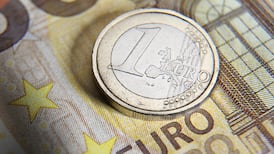China’s economy grew at its slowest pace in 24 years in 2014 as property prices cooled and companies and local governments struggled under heavy debt burdens, keeping pressure on Beijing to take aggressive steps to avoid a sharper downturn.
For investors worried about growth in China and the world this year, the data poses two questions: Will the soft numbers and expectations of further weakness force the central bank to pump hundreds of billions of dollars into banks system-wide to prop up growth? And if so, what does that mean for Beijing's attempts to reform its economy?
The world’s second-largest economy grew 7.4 per cent in 2014, official data showed on Tuesday, barely missing its official 7.5 per cent target but still the slowest since 1990, when it was hit by sanctions in the wake of the Tiananmen Square crackdown.
It expanded 7.7 per cent in 2013. Fourth-quarter growth held steady at 7.3 per cent from a year earlier, slightly better than expectations.
Few had expected China to meet its 7.5 per cent full-year target, but the performance was better than some had feared after a rough few months raised concerns the economy may be heading for a hard landing. “The country’s period of miraculous break-neck growth is over, but let’s get over it,” said a commentary on the official Xinhua news service, referring to a long string of double-digit expansion. “The end of the high-speed growth era does not spell an end for
China’s economy.”
Modest support measures from the government over the year helped stave off a more dramatic slowdown, while Beijing’s tolerance of somewhat slower growth sent a message that reform remains a priority.
"This is the best possible miss you could have from a messaging standpoint," said Andrew Polk, economist at the Conference Board in Beijing. "The government is saying, 'we're not married to this specific target, we missed it and we're okay.' That seems to me a quite positive development." Still, a further slowdown in China could hinder the chances of a revival in global growth in 2015, given the major role it plays, in particular for commodities and high-tech. Indeed, Polk said the GDP figure was difficult to square with other negative signs.
China’s property market - a major driver of demand across a range of industries - has proven stubbornly unresponsive to policy support, and lending data from the banking system shows both enduring weakness and a resurgence in the shadow banking system, which Beijing has been struggling to rein in.
Policymakers also are concerned about the potential onset of a deflationary cycle, aggravated by plummeting energy prices, industrial overcapacity and sluggish demand.
Systemic deflation, an economically toxic cycle in which investors and consumers hold off on fresh spending on the assumption prices will drop further in the future, could leave China in a similar condition to Japan, and is cited as a major reason why Beijing will need to put more money into the system.
At the same time, there may be a looming fiscal crisis among debt-sodden local governments, which depend on land sales for most of their revenue. And more companies, especially small property developers, could flirt with default. Nevertheless, the International Monetary Fund's chief economist Olivier Blanchard said slower growth seen for 2015 reflects a welcome decision by the Chinese government to rebalance the economy away from a heavy reliance on investment and exports to a more consumption-based growth model. The IMF predicts
China’s economy will grow 6.8 per cent in 2015, while the median forecast in a Reuters poll of economists sees an expansion of around 7 percent. December data posted numerous upside surprises after a weak November.
Factory output rose 7.9 per cent, while retail sales rose 11.9 per cent, both above market expectations. However, growth in fixed asset investment, a key growth driver, eased to 15.7 per cent in the whole of 2014 from the previous year, hovering near a 13-year low. Investment growth in real estate slowed to a five-year low and new construction slumped, even as home sales improved at the end of the year.
Reuters












